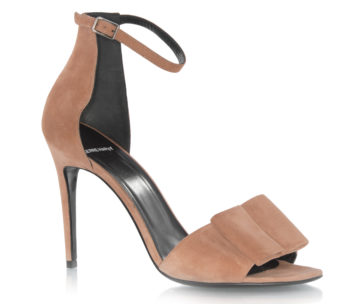Even as the clean beauty market grows, so does the difficulty in making safer, pro-health purchases in personal care and cosmetics. Our challenge as consumers lies in discerning between genuinely health-minded beauty brands, and those that subscribe to “greenwashing.”
Greenwashing refers to the insincere (read: misleading) marketing efforts towards health-minded shoppers. The problem is, terms like “natural” and “non-toxic” go unregulated, which leaves brands legally unhindered (albeit ethically culpable) in what they advertise as clean.
Industry inconsistencies and confusing labels — which range from “3-free,” and “5-free,” all the way up to “15-free,” — make the determination of what constitutes clean nail polish extra-challenging. Celebrity manicurist Mazz Hanna, whose clients include Julia Roberts, Selma Blair, and Halsey, points out, “Nail techs in salons have been subject to chronic health issues for decades — reproductive issues, persistent coughs, cancer, and even birth defects.”
Studies confirm that the chemicals present in nail polish — which range from endocrine-disruptors to cancer-causing carcinogens — can be absorbed through the nail bed. As our experts reveal, these toxins have been linked to negative health outcomes. (EWG)
Back in 2004, the EU banned the use of three such ingredients found in nail polish: dibutyl phtalate (DBP), toluene, and formaldehyde. Hence the nail polish labels noted above, which indicate the absence of specific harmful ingredients. But the wide range of labels also speaks to the varying degrees of toxicity deemed legal for sale and consumption.
Taking this into consideration, Hanna notes that polishes free of five problematic ingredients — DBP, toluene, formaldehyde, formaldehyde resin, and camphor — are the bare minimum that one should consider using. She opts for even more stringent formulas by brands like Orly and Zoya.
Dr. Nicole Acevedo is a reproductive and environmental health scientist with expertise on the health risks of everyday exposure to hormone-disrupting chemicals, including those found in nail polish. Her consulting firm, Elavo Mundi Solutions LLC, helps cosmetics and household cleaning companies develop high-performing products focused on the health of the consumer and the environment at large.
“To be perfectly honest, I do not believe that there is a truly ‘clean/non-toxic’ nail polish available on the market at this time,” Acevedo says. In her estimation, the concept of a “safe manicure” is more about harm-reduction; at present, there is essentially always some risk involved unless you choose to avoid manicures altogether. She goes on to explain that all polishes, whether traditional varnish or gel, make use of harmful chemicals in either the polish itself or the removal process.
She also points out gray areas in the beauty industry that makes shopping for polishes downright confusing. In the absence of uniform federal regulations, there are inconsistencies between nail polish brands in which chemicals their “#-free” labels purport to exclude. What this means is that two different brand labels identified as “10-free” can actually refer to different toxicants with no legal repercussions whatsoever. “So, the consumer is saddled with the responsibility of double-checking ingredients to make sure they understand what is not in their products,” she notes.
Even among well-intentioned brands, the rush to replace blacklisted ingredients can result in additions that are later revealed to be problematic. For example, many companies sought to replace hormone-disrupting DBP with a chemical called TPHP (or TPP) only for scientific evidence to emerge suggesting that TPHP can also disrupt hormone function and may be neurotoxic.
Dr. Acevedo also notes that the ingredient benzophenone-1 is commonly found in most traditional and gel polishes marketed as ‘safer,’ despite being recognized by the United Nations Environment Programme as being an endocrine-disruptor. Finally, lack of raw material transparency can create ambiguity throughout the manufacturing supply chain. Because of this, even well-intentioned beauty brands must conduct ingredient testing in order to truly account for their purity of ingredients.
Until the government implements protective beauty regulations, the theme of consumer accountability is paramount. Geraldine Blanche, fashion law attorney, associate researcher, and PhD candidate at Sciences Po Law School in Paris, France, provides valuable insight into making safer shopping choices. Her work on intellectual property cases reveals that shoppers face additional dangers that go beyond label transparency when exposed to counterfeit beauty products. As such, she recommends shopping in-person, and only from trusted retailers.
As Blanche points out, knowing the values of your chosen retailers is an important first step, and ethical businesses do exist. Blanche also recommends checking out resources from consumer groups, like the Environmental Working Group’s SkinDeep Database, as well as apps that can help consumers take accountability into their own hands.
“At the end of the day, consumer-driven change comes down to questioning everything,” Blanche emphatically asserts. The path to demanding greater corporate transparency might be a long and lengthy judicial process, but in the meantime, informed choices and push-back from consumers is what can help drive industry changes in a cleaner, safer direction.
While this is just a portion of the politics behind our beauty products, this information should make the health-minded consumer stop and think before her next mani.




















